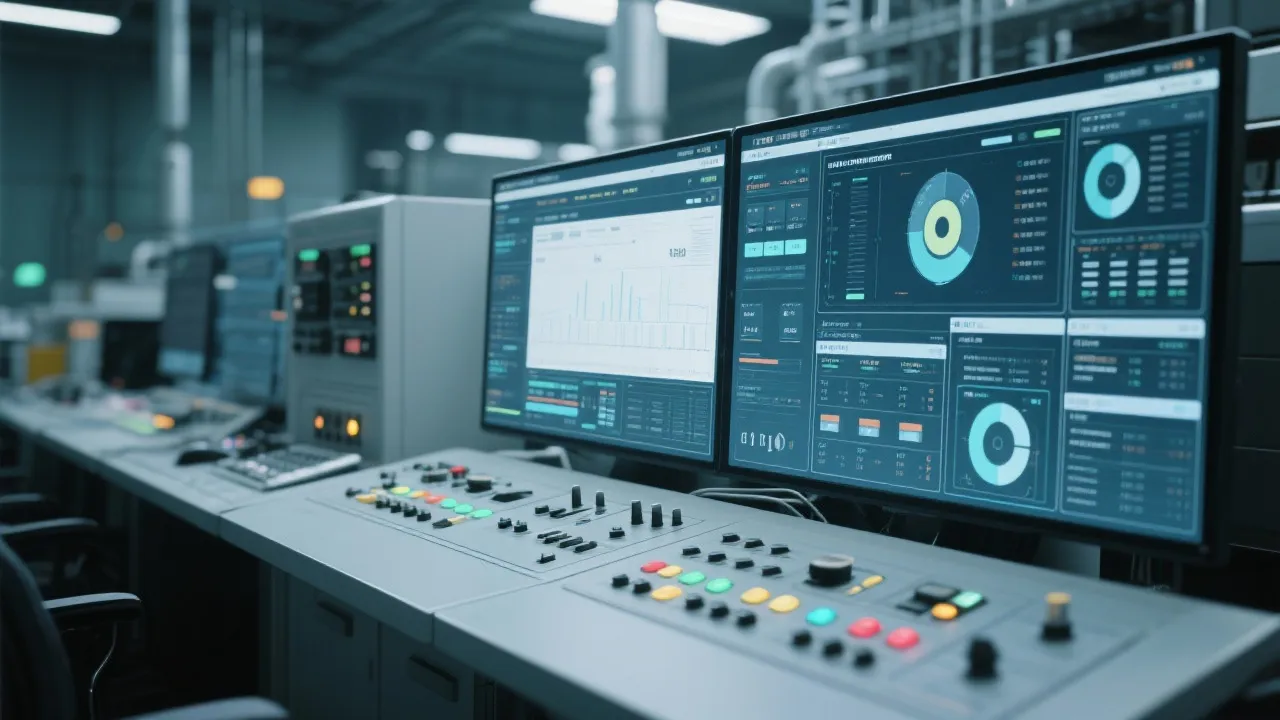IHM SCADA systems play a crucial role in modern industrial automation, offering real-time monitoring, data collection, and control functionalities. These systems combine the Interfacing Human-Machine (IHM) component with Supervisory Control and Data Acquisition (SCADA) technologies, enabling efficient management of complex industrial processes across various sectors like manufacturing, energy, and logistics.

In the evolving landscape of industrial automation, IHM SCADA systems have emerged as pivotal tools. These systems stand at the intersection of advanced technology and industrial applications, providing a seamless interface between human operators and industrial processes. By integrating Interfacing Human-Machine (IHM) components with Supervisory Control and Data Acquisition (SCADA) technologies, these systems facilitate real-time data collection, monitoring, and control, thus optimizing operational efficiency and safety. As companies aim to maintain competitiveness while minimizing costs, the significance of IHM SCADA systems continues to increase, demonstrating their integral role in modern industrial settings.
The Interfacing Human-Machine (IHM) element of SCADA systems serves as the critical bridge between human operators and automated processes. It encompasses the user interface and interaction techniques that allow operators to monitor systems, input commands, and receive feedback. IHM includes visual displays, dashboards, and control stations, which are essential for translating complex data sets into recognizable formats that facilitate quick decision-making. By providing a clear, intuitive interface, IHM components enhance the usability and efficiency of SCADA systems, reducing the likelihood of human error and enabling faster response times to system alerts or anomalies. The centrality of IHM cannot be underestimated, as the effectiveness of SCADA systems is often directly correlated with the quality of the human interface. Developing user-centered designs enhances operator engagement and operational outcomes.
Supervisory Control and Data Acquisition (SCADA) systems form the backbone of industrial control systems. They are designed to gather data from various sensors and equipment, process it in real-time, and transmit it to centralized control units. This functionality is crucial for industries with widespread, complex operations such as oil and gas, power generation, and manufacturing. SCADA systems enable centralized oversight of these operations, providing operators with the information needed to make informed decisions and ensure operational safety and efficiency. One of the key technological advancements in SCADA is the integration of Internet of Things (IoT) devices, which have expanded data collection capabilities to include a vast range of environmental and operational parameters. The reporting forms from these systems contribute valuable insights into performance trends, maintenance schedules, and predictive analysis that aid in proactively managing resources and operational risks.
The application of IHM SCADA systems spans multiple industries, underscoring their versatility and importance in modern automation:
The benefits of implementing IHM SCADA systems extend beyond operational aspects. Companies also gain:
Several key features distinguish IHM SCADA systems as indispensable tools in industrial automation:
| Feature | IHM SCADA | Traditional Control Systems |
|---|---|---|
| Data Handling | Real-time data collection and processing | Limited to batch data processing |
| User Interface | Intuitive and user-friendly | Complex and often non-intuitive |
| Scalability | Highly scalable for expanding processes | Limited scalability |
| Reporting Capabilities | Automated, customizable reports | Manual reporting procedures |
| Integration with IoT | Seamlessly integrates with IoT devices for enhanced data collection | Minimal integration capabilities |
Successful implementation of an IHM SCADA system requires meticulous planning and integration strategies. Key steps involve:
While the benefits of IHM SCADA systems are extensive, there are challenges associated with their implementation and operation:
Q: What industries benefit significantly from IHM SCADA systems?
A: Industries with complex and large-scale operations such as manufacturing, energy, water treatment, and telecommunications benefit significantly from IHM SCADA systems. These sectors leverage SCADA for enhanced reliability and operational oversight, facilitating effective resource utilization.
Q: Can IHM SCADA systems be customized?
A: Yes, these systems can be extensively customized to meet specific operational requirements and industry standards. Customization may involve adapting the user interface, as well as integrating specific modules based on varying industrial processes.
Q: How important is operator training for the implementation of IHM SCADA systems?
A: Operator training is crucial as it ensures maximum system efficiency and safety while minimizing human error. Continuous training programs also ensure operators are kept updated with technological advancements and system functionalities.
Q: What measures should be taken to ensure cybersecurity for IHM SCADA systems?
A: A comprehensive cybersecurity strategy should encompass regular software updates, deployment of firewalls, employee training on cybersecurity awareness, and 24/7 monitoring of system health to detect and respond to anomalies promptly.
Q: Are there specific regulations that govern the use of IHM SCADA systems?
A: Yes, many industries are subject to stringent regulations and standards, such as those from the ISO, OSHA, or EPA in the U.S. Understanding these regulations is critical for compliance and ensuring operational credibility.
IHM SCADA systems are indispensable in today's digital industrial environment. By enabling enhanced data acquisition, improved process control, and increased operational efficiency, these systems empower industries to achieve their productivity and safety goals while adapting to ever-changing technological landscapes. As industries continue to evolve, the advancements in IHM SCADA technologies will play a pivotal role in shaping the future of industrial automation. With a growing emphasis on sustainability and intelligent manufacturing, the potential uses of IHM SCADA systems will extend beyond immediate operational needs, contributing to the broader objectives of efficiency, energy conservation, and environmental stewardship. In this sense, IHM SCADA systems not only optimize production but also support the overarching goals of modern industry in enhancing both economic viability and environmental sustainability.